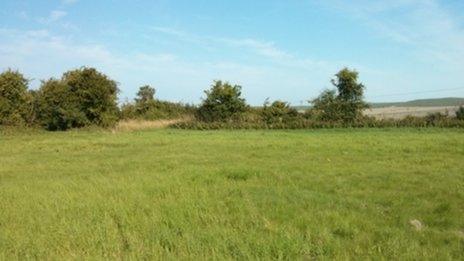Replica Neolithic long barrow approved for druid worship
- Published
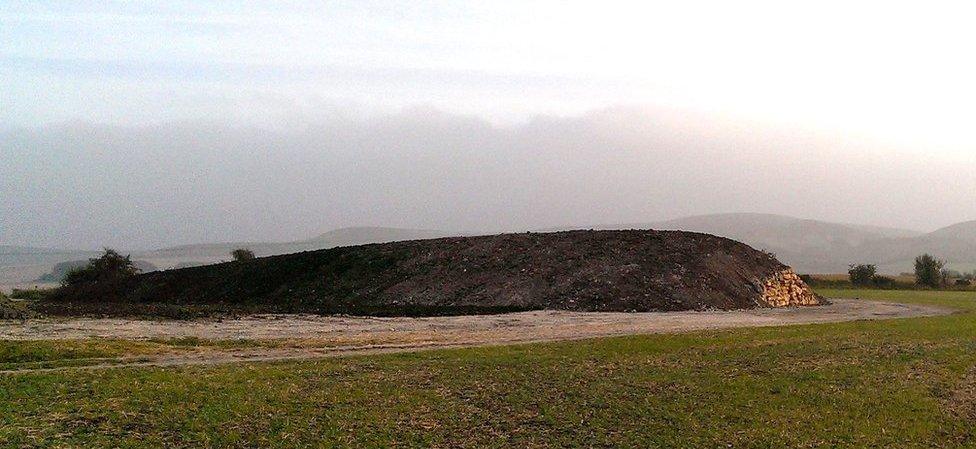
Barrows are artificial hills of earth and stones built over the remains of the dead
A replica Neolithic long barrow built in 2014 has been registered as a place of worship for druids.
The burial chamber, which can hold up to 1,000 urns, was opened at All Cannings in Wiltshire four years ago.
Aligned to the winter solstice sunrise, the barrow already hosts four services a year to mark solstices and equinoxes.
Owner Tim Daw said: "A terraced house in Lancashire is registered as a druid temple but the barrow is the first proper structure to be recognised."
The long barrow is the first to be built in the UK for 5,500 years.
Constructed using traditional methods over nine months, the chalk mound has four large chambers, each housing 55 niches, which can hold up five urns each.
Clients are charged about £1,000 for use of a niche and all them have now been reserved.
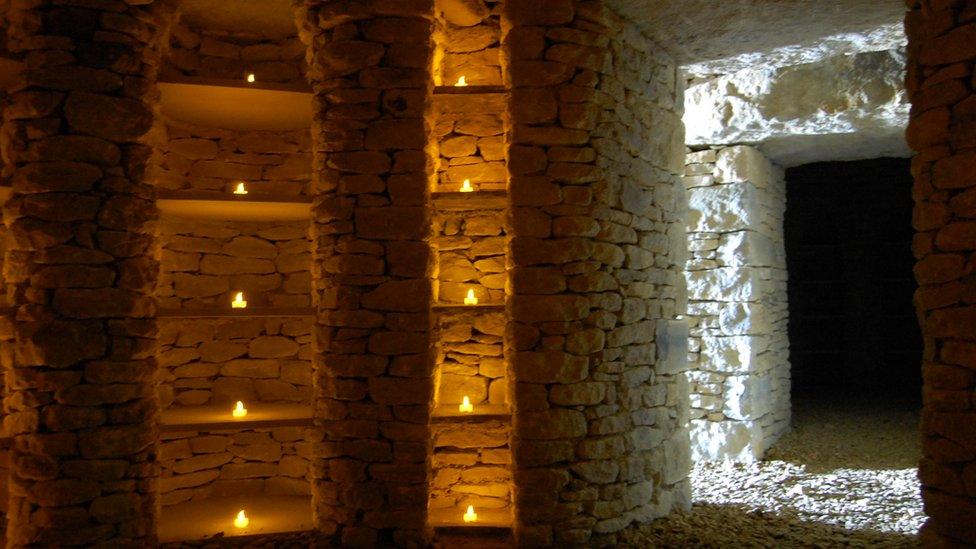
The burial chamber has already hosted druid ceremonies, attended by people from across the world, Mr Daw said

Clients are charged about £1,000 for use of a niche and all the niches have now been reserved
The mound has now become the second structure registered with the Home Office "for the purpose of worship" for druids.
"I'm not a druid myself but the barrow was built as a temple, copying the ancient long barrows and aligned to the mid-winter sunrise," said farmer Mr Daw.
"For the winter solstice, the sun lights up the whole passageway and we get around 30 to 50 druids and people coming along for the view."
The Southfield Temple of Druidic Worship, on the ground floor of a terraced house in Lancashire, is the only other place registered as catering to a druid denomination.
However, Mr Daw insists the long barrow is not "exclusive" to pagans.
"It's not like a parish church, there is a congregation in an elusive sense but it's a bit more of a virtual community," he said.

What is a long barrow?
Barrows are artificial hills of earth and stones built over the remains of the dead
They were usually reserved for members of the social elite or Anglo-Saxon royalty
Ordinary people were usually cremated or buried in more humble graves
They were first constructed in about 4,000 BC up to the late pre-Christian era
England's most famous barrow is at Sutton Hoo in Suffolk
Source:BBC Religion

- Published21 December 2014
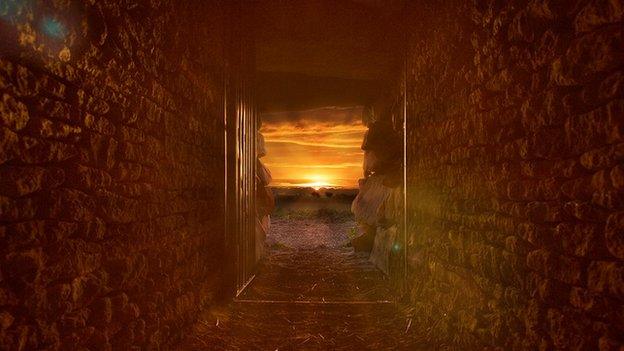
- Published20 September 2014
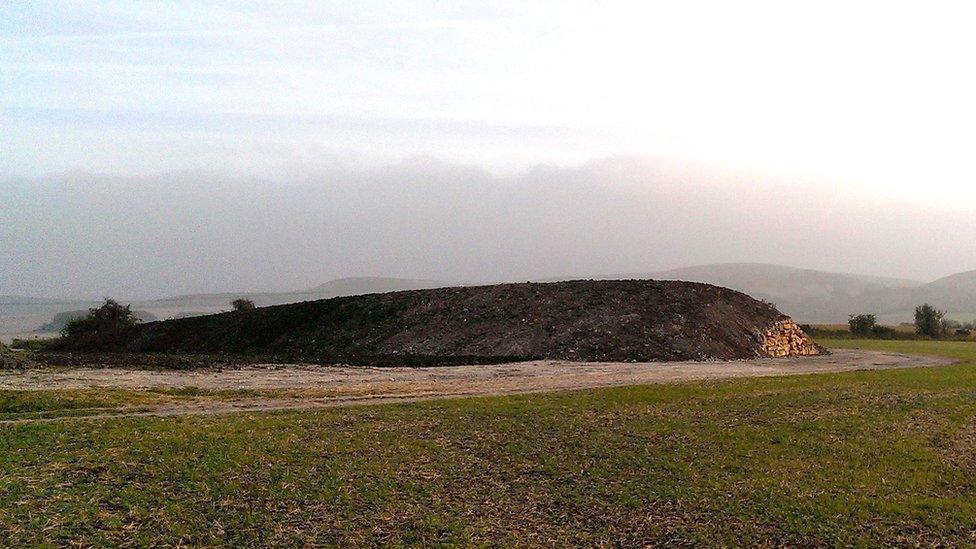
- Published22 March 2014
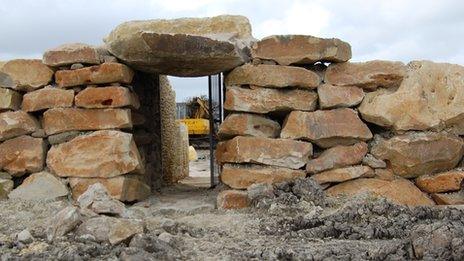
- Published11 January 2014
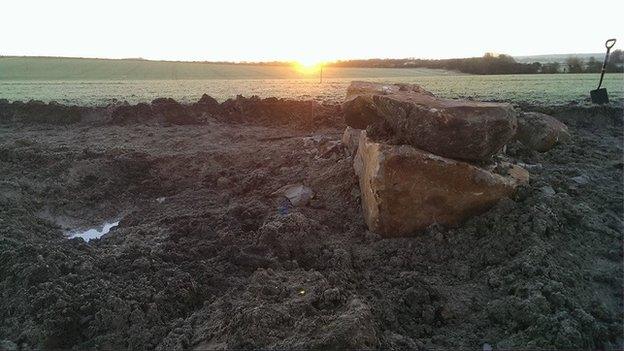
- Published23 December 2013
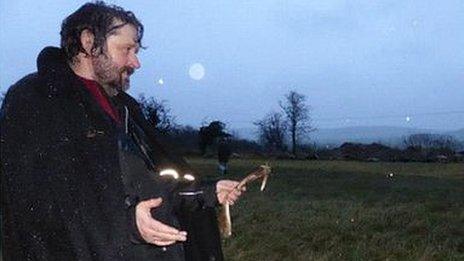
- Published15 October 2013
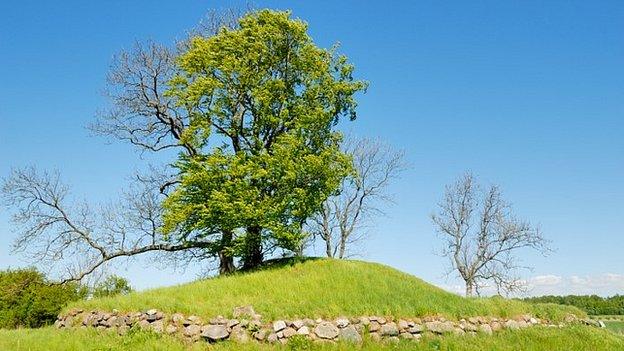
- Published28 August 2013
